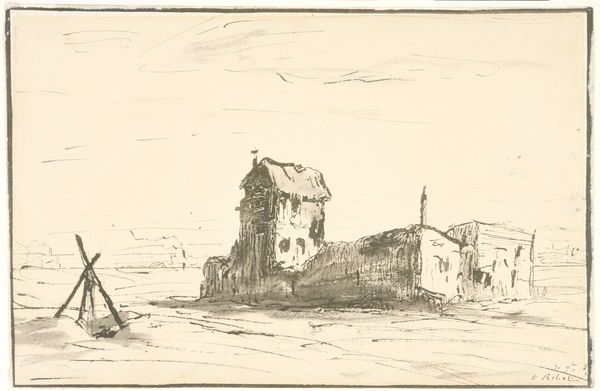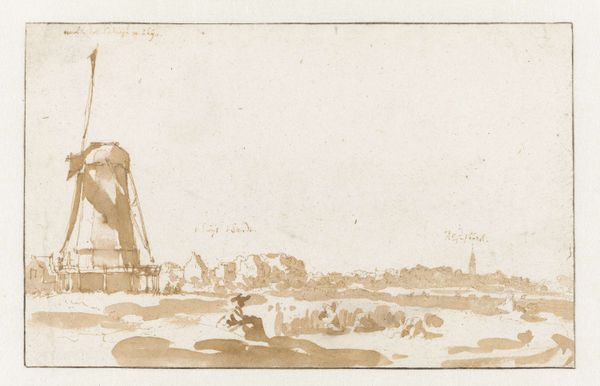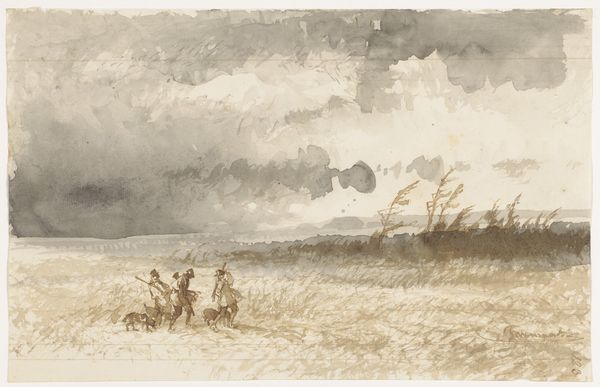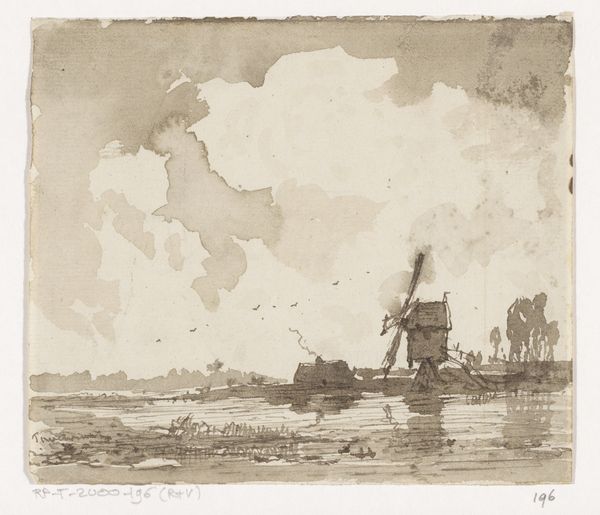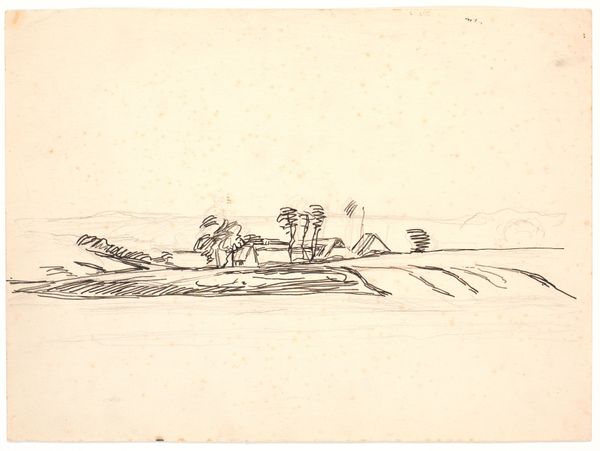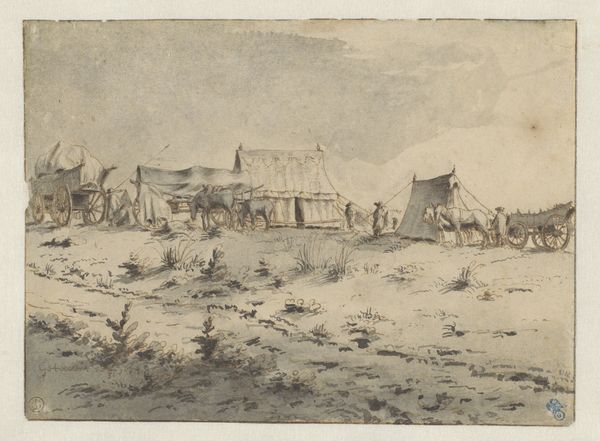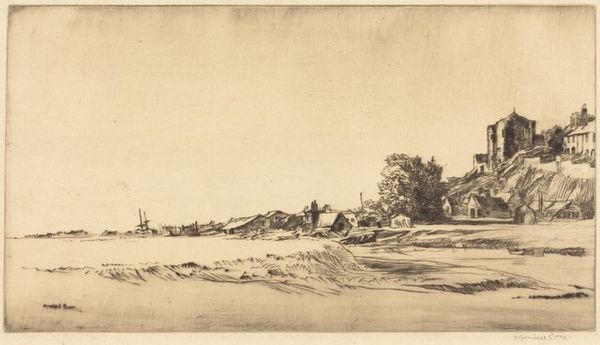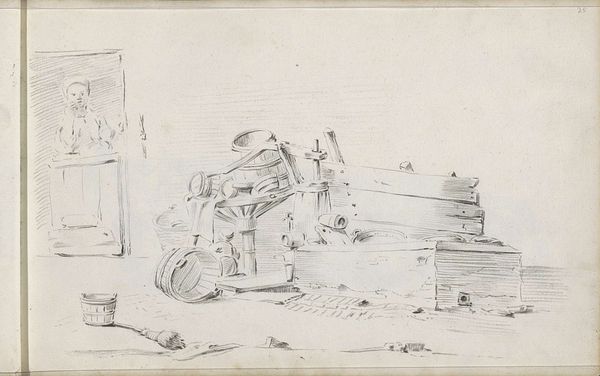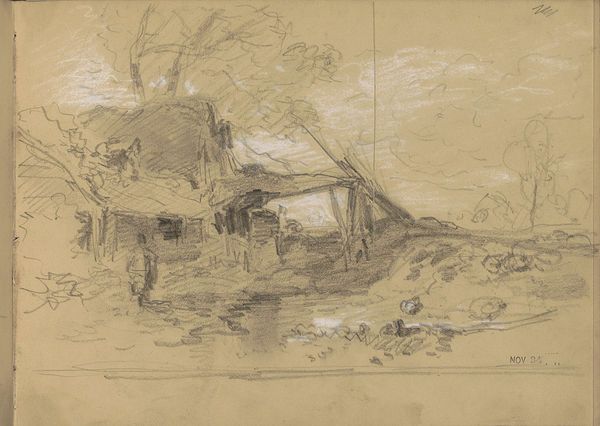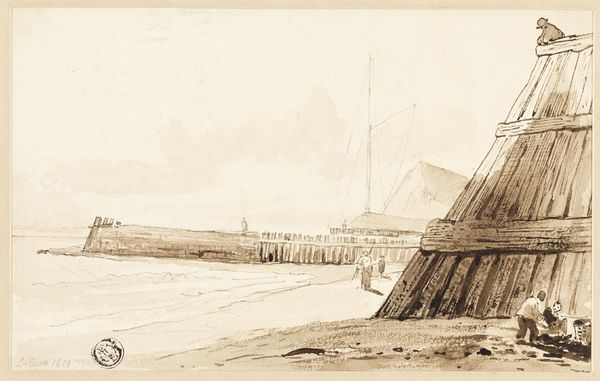
drawing, plein-air, watercolor
#
drawing
#
plein-air
#
landscape
#
figuration
#
watercolor
#
19th century
#
watercolour illustration
Dimensions: height 222 mm, width 280 mm
Copyright: Rijks Museum: Open Domain
Curator: Let's turn our attention to Johannes Tavenraat’s “Windmill Without Sails on the Water," created sometime between 1819 and 1881. It's a watercolor and pen drawing. Editor: Immediately, I'm struck by a sense of quiet melancholy. The monochrome palette adds to this somber mood, as does the broken-down structure. It speaks of industry fallen into decay. Curator: Yes, but there's also a kind of raw honesty. The incomplete structure invites speculation. For me, the bare form of the windmill, absent its sails, evokes a very specific symbolic meaning: potential energy and unrealized possibilities. It seems to mirror human endeavors; incomplete projects, vanished hope. Editor: I agree; however, let's not romanticize neglect. This piece sits uncomfortably within its period. While landscape art often idealized the pastoral, the starkness here highlights the exploitation inherent in industrialization. Where are the people, the communities affected by this decaying monument to progress? The small gathering off to the right doesn’t fill in enough of the story here. Curator: Interesting. What is highlighted instead are the deeper cycles of cultural memory and meaning. Windmills represent a vital energy that societies harness; their absence creates an obvious disruption. Consider, too, that ruins themselves often become potent symbols; they echo with a history—real and imagined. This one reminds me, specifically, of lost Dutch power overseas in its former colonies. Editor: A colonial reading feels like a good starting point here. Although ostensibly a landscape, this piece implicitly raises questions about what is lost through colonial ambition. Whose labor fueled these mills, and what became of that labor once the structures were no longer viable? It might have also been simply more profitable at one point to have no sails because their function was unneeded any longer. Curator: Your attention to sociopolitical subtext provides necessary insight into the work as more than just aesthetics. It certainly complicates any simplistic readings about progress or decline! Editor: Indeed, this brief contemplation on the artwork compels me to interrogate assumptions about land, progress, and value. It begs consideration for the perspectives erased within dominant narratives. Curator: For me, these observations solidify the potential of seemingly quiet artworks. The power lies not just in surface representation but rather a deeper meditation on time, labor, and continuity.
Comments
No comments
Be the first to comment and join the conversation on the ultimate creative platform.
